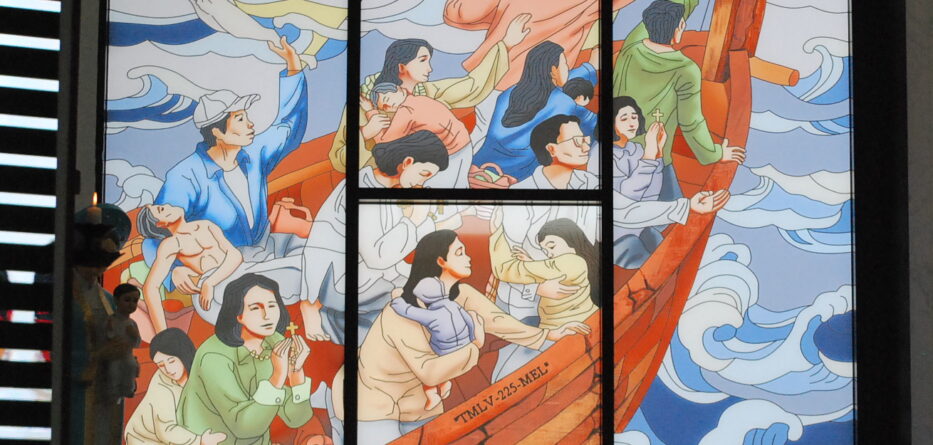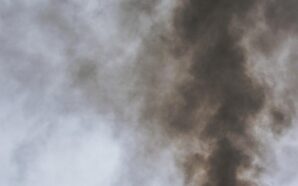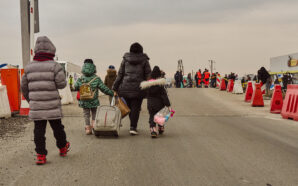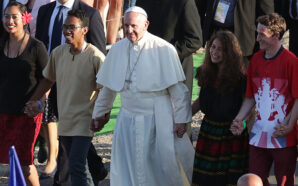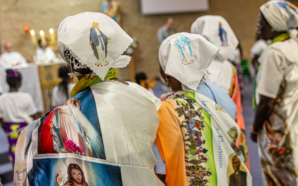2025 Speech at the Australian Catholic Historical Society
50 years after the Vietnam War: a personal journey
March 16 2025
Most Reverend Vincent Long Van Nguyen OFM Conv DD STL, Bishop of Parramatta
SYNOPSIS
I was born and raised during one of the most violent conflicts that is known as the Vietnam War. As a survivor of that tragic event and, later on, a refugee, I -along with millions of my fellow Vietnamese- are the living witnesses to freedom and fundamental human values denied to us in our own country. Wars are always controversial and divisive; but as far as we were concerned, there was nothing more honourable than the Aussie soldiers’ fight with and for the people of Vietnam, for their future without the curse of tyranny, for justice and freedom. That fight never was and never is in vain. 50 years after the Fall of Saigon, I still think the Vietnam War was a tragedy. There were lives lost, deep scars of physical and mental wounds, memories that still wait to be healed, on both sides of the conflict. Unless those wounds and memories, including those on the losing side, are acknowledged, healing cannot take place and nation building cannot be fully mobilised. 50 years after the war and Vietnam is still a divided country -not by geography but by the regime’s failure to reconcile with those who lost. History is incomplete when it is written solely from the perspective of the conquerors or when it ignores the pain of the vanquished. We who were, and continue to be witnesses to that tragedy, owe an enormous debt to those who suffered and continue to suffer from its consequences. It is the debt of our own humanity.
———————————
Dear friends,
It is a great honour for me to share with you my personal experience of the Vietnam War which ended 50 years ago. For me and for most Vietnamese in the Diaspora, the Fall of Saigon was one of the darkest days in the history of our nation. It was after the catalyst for the biggest and most dramatic exodus of Vietnamese refugees from Vietnam. The communist regime which rules the forcefully unified country still celebrates their so-called “Liberation Day” with military parades during the day and fireworks at night. It continues to repress any perceived opposition and remove any vestiges of the once free Republic of South Vietnam. History as they say is written by the victors. But even as some of the old communist leaders acknowledged, they might have won the war but not yet the peace.
THE COSTS OF THE WAR
The Vietnam War was one of bloodiest, protracted and at the same time most controversial and divisive war that edged sharply in our collective memory. Who can forget horrible images of that war which were projected on our television screens every day? Who can forget the demonstrations on the streets of our cities and the campuses of our universities? It was a war that we could not come to terms with, even years after it had been waged, fought, finally abandoned and then tragically lost.
For many people around the world, it was often understood to be the American War. The U.S. government certainly acted as if they controlled the operations of the war and the South Vietnamese regime. After the CIA orchestrated coup d’etat against President Diem in 1963, the American involvement in the war increased dramatically. Over 500,000 military personnel were stationed in different parts of the country, which was more than the entire regular army of South Vietnam. By the time the Americans withdrew on March 29th 1973, nearly 60,000 were killed or missing in action.
From the Australian perspective, the Vietnam War was our longest and most controversial military commitment of the 20th century. With the Cold War at its height, Australia – concerned about its regional security and communist expansion – began a gradual commitment of forces to Vietnam. By the time we withdrew our forces in late 1972, over 60,000 military personnel had served there. In many instances, they came home not only without the recognition they deserved but also with the rejection they did not deserve. The Vietnam veterans had a welcome home parade in 1987, which was 15 years after they had returned from the war. In 1992, the Vietnam Forces National Memorial that commemorates the 524 Australians who died in service in Vietnam.
As for the casualties on the Vietnamese side, the numbers are simply mind boggling. The South Vietnamese Army lost over 300,000 soldiers while the Communist North suffered more deaths, over 600,000 regular soldiers and Viet Cong guerrillas, since they invaded the South. Civilian deaths amounted over 1.3 million. They were caused by artillery bombardments, aerial bombings, assassinations, massacres and terror tactics. There was no family in Vietnam that was not affected by the war. In some instances, cousins or even siblings from the same family fought on opposite sides. My uncle was in the communist army and killed in combat in the South. Our village hosted a large US military barrack which was attacked by the communist forces during the Tet Offensive in 1968. I was 7 years old at the time and I still remember seeing the dead bodies of retreating VCs scattered throughout the village.
For the Vietnamese south of the 17th parallel, the war was a matter of the right to self-defence, freedom and self-determination. It was the war against communist aggression, not the American War or the war against imperial America as the communist propaganda machine would have it. Like Ukraine today, the overwhelming majority of South Vietnamese people saw themselves as fighting for their own survival. The communist north could have stopped the war anytime by simply leaving us alone and not sending their troops across the border under the false banner of “liberation”.
South Vietnam might have become like South Korea today. Instead, we felt abandoned when America and its allies decided to withdraw their troops and their support. I was at Vung Tau or Cape St James on the last day of the war. Thousands of South Vietnamese troops had retreated to this last stronghold in the hope of being evacuated by boat to the U.S. 7th Fleet. They were completely overrun by the advancing North Vietnamese Army. The scenes of the horrific deaths of hundreds still haunt me to this day.
AFTER THE FALL OF SAIGON
The victory and the unification of the whole country should have been a cause of celebration. But when millions of Vietnamese refugees took to the sea in order to escape the so-called “liberation from imperialist America”, outsiders began to understand why it had to be fought and resisted. You know, the Vietnamese are a very proud people. We are proud of our heritage which has more than 5,000 years of accumulated history; we are proud of our land and sea which are among the most spectacular in Asia. Those of you who have travelled to Vietnam can concur with me. Our lives and destinies are deeply rooted in our own soil. We were never known to be nomadic and migrant people. Never in our long and checkered history has there been such a mass exodus of people from our own land. Never, not even when the Chinese invaded us and subjected us to servitude for a thousand years. Not even when the French exploited us for a hundred years or the Japanese caused thousands to die of starvation during the Second World War. The communist regime outdid them all by their reign of terror which was the reason for the biggest, the most tragic and the most unprecedented exodus in our history.
I am not here to revisit all the evils of communism. It suffices to say that the exodus was the testament to the indomitable desire to live in freedom and dignity in every human being. We Vietnamese refugees and survivors of that tragic event are the living witnesses to freedom and fundamental human values denied to us in our own country. Ours was the testament that freedom is worth fighting for. Wars are always controversial and divisive; but as far as we were concerned, there was nothing more honourable than the partnership of the Australian people, especially the Aussie soldiers’ fight with and for the people of Vietnam, for their future without the curse of tyranny, for justice and freedom. That fight never was and never is in vain.
Personally, I am a second-generation refugee. By that I mean my parents themselves were refugees before me. In 1954, following the Geneva Convention that divided Vietnam into two ideologically opposing sides, they –a young couple in their 20s with a toddler, my then 2-year-old eldest sister- uprooted from their home near Hanoi and ventured to the south. After running the gauntlet through many checkpoints, they managed to get onto a boat and went to a part of the country they knew nothing about. Why did they and over a million Vietnamese from the north like them undertake such a perilous journey to the unknown south? The answer is simple: they had seen the atrocities committed by the newly inducted regime in such catastrophic events as the so-called land reform, the forced collectivisation of individual peasant farms, the systematic oppression of Christianity, the public trial and summary execution of thousands. They had lived in fear and in terror. In such atmosphere, they were ready to exchange everything for a chance to live in freedom.
It was by the twist of fate that I would later follow in their footsteps. We were a family of seven children. It was common practice for parents to secure the safe passage for their adult sons in view of the two simultaneous border wars: the Chinese to the North and the Khmer Rouge to the South. My two older brothers escaped first and settled in Holland. I myself escaped by boat in 1980 with my sister-in-law and her two young children an 18-month-old boy and a baby girl barely 6 months old. I ended up holding her for the most part of the journey. It was the most distressing experience I ever encountered.
But my experience was mild in comparison with so many of other boat people whose cry could have pierced the heavens. They were those who were shot and killed by the communist coast guards; they were those who were lost at sea without a trace; they were those who were robbed, raped, mutilated or killed by pirates. Some survived to tell their horror stories; but thousands upon thousands of others did not. One study estimates that up to 500,000 of the 2 million Vietnamese refugees died in the pursuit of freedom. Without a doubt, this was the darkest episode in the history of the Vietnamese people. It is something that we will never forget.
For this, I have adopted as my episcopal coat of arms the image of a journey into freedom. It symbolises both the spiritual exodus that I as a Christian am called to make and the real painful quest for liberty that I and countless other boat-people made. My motto “Duc in altum” which means “go further into the deep” is in part meant to honour the memory of my people who suffered and died in pursuing the dream of freedom and dignity. As far as I know, I am the only Vietnamese bishop whose coat of arms features the South Vietnamese flag and the refugee heritage. For the vast majority of Vietnamese in the Diaspora, the South Vietnamese flag, not the communist red flag which is often jointly displayed with the hammer and sickle, represents the true aspirations of the people of Vietnam. For this symbolic association with the free and democratic South Vietnam and for advocating for social justice in my home country, I am considered persona non-grata by the communist government. I have not returned to Vietnam since becoming a bishop. That is a small price to pay for what you believe.
VIETNAMESE REFUGEES IN AUSTRALIA
We Catholics often say “God works in mysterious ways” and this is certainly true in the case of the Vietnamese boat people. 50 years or so ago, we arrived in this country in a state of utter vulnerability. Our experience is clear evidence that even the most traumatised and the most impoverished group can be integrated in our multicultural society and can make a positive contribution. The fear that our social cohesion might be undermined or that our very future might be compromised on account of an imaginary “Yellow Peril” has been proven unfounded. Australia in welcoming us has effectively buried the White Australia Policy. We have evolved to become a much more dynamic, diverse and prosperous nation. Thanks to multiculturalism, we ‘ve now got a bit more culinary variety than bangers and mash!
Australia rose to the challenge in the past with its generous embrace of migrants and refugees. It proved itself especially courageous during the Vietnamese exodus and accepted an unprecedented number of Asian refugees. We have not done too badly since. We have virtually cornered the bakery, the hair salon, the pedicure, manicure and waxing markets in Australia. At my Episcopal Ordination, I made a tongue-in-cheek remark that we are the new Irish. That might not be a compliment to the Irish or perhaps -to the Vietnamese. But I think it is true in some unexpected ways. We have changed the Eurocentric face of the Catholic Church in Australia.
For a long time, Ireland had a surplus of priests and many of them came to fill the gap in Australia and other parts of the world. Now, it seems to be the Vietnamese priests and religious who respond to the missionary call. They are not only in neighbouring countries of Laos, Cambodia and Thailand but are also found in distant places like Japan, Taiwan, Africa, New Zealand and of course Australia. There are now two bishops of Vietnamese origin in Australia, along with up to 300 priests. If you look up the Australian Catholic Directory, you will find that Fr Nguyens outnumber Fr Smiths by 2 to 1. If the Vietnamese had our own eparchy here, we would easily relegate the Maronites to second place. There are nearly 90,000 Vietnamese Catholics in Australia, or 28% of the Vietnamese Australians. This is more than 3 times higher than the percentage of Catholics in Vietnam. I put it down to the fear of persecution that Vietnamese Catholics felt towards the communist regime. In 1954, nearly a million Catholics fled North Vietnam. In many instances, entire villages led by their respective parish priests relocated to the South. In fact, in my home diocese, there are parishes which are called Hanoi, Bui Chu, Ninh Binh etc because of their connections to the North.
Up until the Doi Moi or Perestroika period, the relationship between the Catholic Church and the communist government in Vietnam was at best strained and at worst hostile. In the wake of the Fall of Saigon, seminaries were systemically suppressed along with religious houses. Several bishops and hundreds of priests were sent to “re-education” camps, a euphemism for prisons and religious freedom was severely restricted. The Coadjutor Archbishop of Saigon Van Thuan Nguyen spent 13 years in one of those “re-education” camps. Upon his release, he was kept under house arrest for 3 more years before he was allowed to go abroad, including Australia where his parents had resettled. He was made a cardinal and president of the Pontifical Council of Justice and Peace. There is a canonisation process under way, a move that the communist government would not endorse with enthusiasm.
Nevertheless, by early 2000s, after Vietnam had normalised diplomatic relations with the West and joined the WTO, its relationship with the Holy See began to improve albeit slowly and cautiously. The gradual rapprochement was the catalyst for a resurgence in practice of the faith and especially in vocations to the priesthood and religious life. Almost every major congregation and ecclesial movement now have a presence in Vietnam. There are more churches, pilgrimage centres and other religious places being built or refurbished in the country than perhaps any other countries in the world.
Despite these positive signs, Vietnam remains an authoritarian state in which the communist party rules with absolute power. Tensions arise and setbacks follow particularly when the Church takes a stance on social justice issues. For example, in 2008, the former Archbishop of Hanoi, +Joseph Kiet Quang Ngo, led a peaceful prayer vigil in front of the former nunciature which the city government was intent on demolishing. Upon pressure made to the Holy See, he was promptly relieved of his office and forced into early retirement. For many years, the Redemptorists in Saigon gathered war veterans and amputees of the former regime and cared for them. These are considered anti-revolutionary remnants. The government pressured the Redemptorists and the bishops until they ceased their support for those poor souls.
Although Vietnam’s relationship with the Holy See has improved over the years, religious freedom in the country is still restrictive. On the face of it, there are positive signs such as high rate of attendance, public demonstrations of religiosity, tremendous growth in priestly and religious vocations. It is a far cry from the dark days of virtual religious prohibition following the end of the war. On the other hand, the government restrict the influence of the Church by forbidding or limiting its activities. For instance, there are practically no Church-run health care services, hospitals or schools. Many prestigious Catholic schools and hospitals which were confiscated by the government remain firmly in their hands. In recent years, religious congregations have gradually filled in the gaps left by the government and responded to unmet needs by setting up new social ventures such as preschools, orphanages, medical clinics, vocational schools and dormitories for tertiary students.
50 years after, I still think the Vietnam War was a tragedy. There were lives lost, deep scars of physical and mental wounds, memories that still wait to be healed, on both sides of the conflict. Unless those wounds and memories, including those on the losing side, are acknowledged, healing cannot take place and nation building cannot be fully mobilised. 50 years after the war and Vietnam is still a divided country -not by geography but by the regime’s failure to reconcile with those who lost. History is incomplete when it is written solely from the perspective of the conquerors or when it ignores the pain of the vanquished. (Perhaps this is relevant for us Australians in terms of the place of the indigenous frontier conflicts within the “memory” institutions of Australia). We who were, and continue to be, witnesses to that tragedy, owe an enormous debt to those who suffered and continue to suffer from its consequences. It is the debt of our own humanity.




